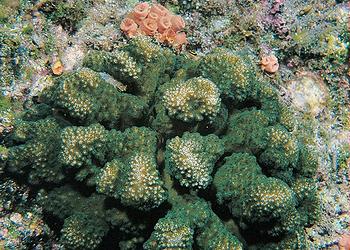
WASHINGTON, DC, November 30, 2012 (ENS) – Sixty-six species of coral in U.S. waters should be protected under the Endangered Species Act because global warming, disease and ocean acidification are pushing them toward extinction, the federal government proposed today.
Under the rule proposed by NOAA Fisheries, 12 species of coral would be listed as Endangered and 54 as Threatened.
Listing species as Endangered does not prohibit activities like fishing or diving, but prohibits the specific “take” of those species, including harming, wounding, killing, or collecting the species. It also prohibits imports, exports, and commercial activities dealing in the species.

Listing would mean habitat protection, recovery planning and prohibition of federal actions that could jeopardize the corals.
The listing proposal responds to a 2009 scientific petition by the Center for Biological Diversity seeking federal protection for 83 corals in U.S. waters. NOAA determined that protection for 16 of those species is not warranted.
Of the 66 corals covered in NOAA’s proposed rule, seven live in Florida and the Caribbean. In these waters, five corals would be listed as endangered and two as threatened.
The other 59 species proposed for protection live in the Pacific, including Hawaii. In the Pacific, seven species would be listed as endangered and 52 as threatened.
NOAA Fisheries is also proposing that two Caribbean species – elkhorn and staghorn corals – already listed under the ESA be reclassified from threatened to endangered.
“Healthy coral reefs are among the most economically valuable and biologically diverse ecosystems on earth,” said NOAA administrator Dr. Jane Lubchenco. “Corals provide habitat to support fisheries that feed millions of people; generate jobs and income to local economies through recreation, tourism, and fisheries; and protect coastlines from storms and erosion. Yet, scientific research indicates that climate change and other activities are putting these corals at risk.”
Lubchenco said, “This is an important, sensible next step toward preserving the benefits provided by these species, both now and into the future.”
“Corals are facing severe threats, and it’s highly likely that these threats will increase over time,” NOAA said in its proposal. The agency notes that coral cover in the Caribbean has declined from 50 percent in the 1970s to less than 10 percent today.
The agency identified 19 threats, including: rise in ocean temperatures, ocean acidification, disease, ecological effects of fishing, and poor land-use practices.
“The three major threats identified – rising ocean temperatures, ocean acidification, and disease – are all directly or indirectly linked to greenhouse gas emissions and a changing climate,” NOAA said in a statement. “But, despite the broad global threats to corals, there is evidence that alleviating more local stressors can help improve resiliency for many coral species.”
“It’s a bittersweet victory to declare these animals endangered,” said Miyoko Sakashita, oceans director with the Center for Biological Diversity. “I’m deeply saddened that our extraordinary coral reefs are on the brink of extinction, but there’s hope that protection under the Endangered Species Act will give them a powerful safety net for survival.”

“Corals are tremendously important to the biodiversity of the world’s oceans and they have measurable economic value for communities around the world,” NOAA said. “Reefs provide home and shelter to over 25 percent of fish in the ocean and up to two million marine species. The direct economic and social benefits of coral reefs are real and wide ranging.”
The proposal comes after NOAA determined in February 2010 that the Center had presented “substantial information” that listing under the may be warranted for 82 of the 83 petitioned species.
NOAA convened a Biological Review Team to conduct a formal Status review of the 82 species; the team released its peer-reviewed report in April 2012 summarizing the best available scientific and commercial information.
One independent study cited by NOAA reports that coral reefs provide approximately $483 million in annual net benefit to the U.S. economy from tourism and recreation activities and a combined annual net benefit from all goods and services of about $1.1 billion.
NOAA also estimates the annual commercial value of U.S. fisheries from coral reefs to be more than $100 million; reef-based recreational fisheries generate an additional $100 million annually.
The agency engaged the public between April and July 2012 to gather scientific information and allow for a public review of the Status Review and Draft Management Reports. Information from this process was was summarized in a new Supplemental Information Report.
Together, the Status Review, Supplemental Information, and Final Management reports form the basis of NOAA’s proposed listing of these 66 corals. Click here for a list of all 66 corals.
Before making a final decision on this proposal, NOAA is asking for more public comments during the next 90 days.
To submit a public comment online go to www.regulations.gov and enter NOAA-NMFS-2010-0036 into the keyword search.
Click here:
- for information on public hearings in the Pacific islands or Southeast regions to be held in January and February 2013.
- to join the national stakeholder webinar on December 19, 2012, at 4:00PM EST.
- to join any of several webinars, to be announced.
Copyright Environment News Service (ENS) 2012. All rights reserved.
